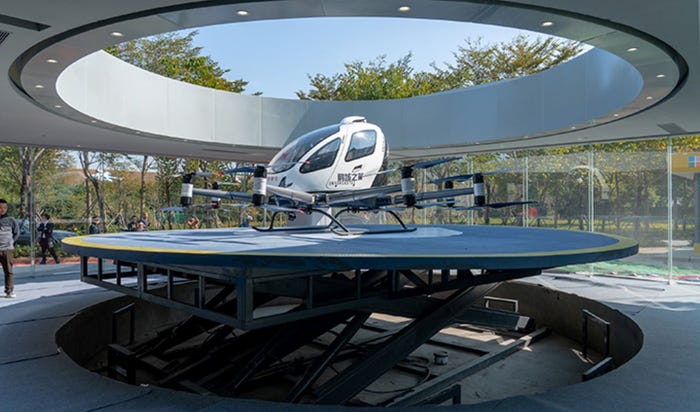When to Use LTE Cat M for IoT DevicesWhen to Use LTE Cat M for IoT Devices
May 19, 2021

Sponsored Content
Cat M is cellular connectivity for “massive IoT”, with key benefits for both network operators and IoT builders, but also some constraints.
What is Cat M?
LTE Cat M (also known as LTE-M) is a low power wide area (LPWA) technology designed to support “Massive IoT”, i.e. billions of IoT devices, with cellular technologies. Today Cat M is mostly referring to Cat M1, as Cat M2 adoption will take a few more years.
LTE radio technology uses “categories” to differentiate the capability of each device that attaches to an LTE network. For example, Cat 1 refers to devices that can support download speeds up to 10 Mbps, while Cat 4 refers to devices that can use carrier aggregation and support download speeds up to 150 Mbps. Cat M1 refers to a category of devices that operate on a narrow 1.4 MHz channel with observed download speeds in the 589 Kbps range, and 1.1 Mbps on the uplink (3GPP release 14). The older Cat M modules have even lower speeds (300 Kbps downlink / 375 Kbps uplink).
There are key benefits of Cat M for both the Mobile Network Operators (MNOs) and IoT builders.
The main benefit to MNOs is that Cat M devices operate on much smaller frequency bands (1.4 MHz). This allows them to pack more devices into the available spectrum at each cell site. A typical LTE cell site can support 10x the amount of active Cat M devices compared to active regular LTE devices.
The main benefit to IoT builders is that Cat M modems use less power, enabling power-constrained devices to operate for months or years on a small battery with advanced power saving features. Cat M modems also boot up faster than Cat 1 modems from cold boot up, resulting in faster connection times. Another key advantage is that Cat M modems tend to cost less than regular LTE modems, which helps in reducing the hardware cost.
The power-saving features of Cat M
Cat M offers a couple of power savings features that allow IoT devices to operate in low power mode and achieve extended battery life.
Power Saving Mode (PSM) – The PSM feature allows an IoT device to sleep for extended periods of time without being woken up by network paging. Typical cellular devices actively transition between two modes – IDLE and ACTIVE. When the device is not sending/receiving traffic it goes IDLE, which has a positive effect on battery life. If there are IP packets that need to be delivered to the device, the network pages for the device. The device must respond to the page and transition to ACTIVE mode to receive the traffic. This has an impact on IoT devices that are power-constrained. PSM allows these IoT devices to negotiate an extended sleep period (hours or days) with the network and avoid being paged during that sleep cycle. If there is any traffic that arrives for the device during the sleep period, the traffic is buffered in the network (at least the last 100 bytes) and delivered when the device becomes ACTIVE.
Extended Discontinuous Reception (eDRX) – eDRX is a Cat M feature that allows devices to sleep for longer periods of time and wake up at fixed intervals (also known as the eDRX cycle), to send and receive traffic. An eDRX-enabled device needs to negotiate the eDRX cycle with the network, so that it can avoid being paged by the network during those sleep periods. eDRX allows devices to use, e.g., a 10.24 second paging cycle as opposed to the 1.28 second paging cycle used by regular LTE devices. (See Low-Power Optimization for Cellular Modules for more details on settings that can be used with eDRX when using Twilio Super SIM.)
PSM and eDRX are complementary and can both be used by a Cat M device. eDRX helps the device sleep a bit longer, wake up at fixed intervals, and generally reduce “chattiness” between the device and the network. PSM helps the device sleep for much longer – hours or days.
Depending on the use case, you may need to use just eDRX, PSM or both. Note that not all Cat M networks support eDRX and PSM, yet most do today. We expect the situation to keep improving, with more networks turning on these two critical features to enable power-constrained devices.
Current constraints of Cat M networks
While Cat M presents a tremendous opportunity for power constrained IoT devices, there are some drawbacks as well.
Cat M provides low bandwidth. Even though Cat M supports peak upstream speeds of around 1 Mbps, our tests show that typical speeds are around 300 Kbps.
Cat M support is not widely available yet around the world. There are still many countries where Cat M networks have not been launched yet. Cat M coverage is a subset of regular LTE coverage for the foreseeable future.
Devices using Cat M may get pushed off the network (preempted) in case of congestion. When a cell site is congested, the network may force those Cat M devices that have been connected for a long time to disconnect and re-attach at a later time.
Typical Cat M use cases
As should have become clear by now, Cat M is best suited for IoT devices that are power-constrained and exchange low volume of traffic with your application cloud. Here are a few example use cases:
Asset tracking (e.g. waste management)
Smart meters (generally any sensors that periodically report readings such as temperature, air quality, etc.)
Smart irrigation
In general, any device that operates on small batteries, which can’t be replaced or recharged easily, benefit significantly from using Cat M.
When LTE Cat 1 is better than Cat M
If your IoT use case involves maintaining an “always-on” connection between your devices and your application cloud, then an LTE Cat 1 (or Cat 3/4) modem is better suited for your device. In an “always-on” mode, which prevent your devices from ever sleeping, you are not taking advantage of any of the power saving features provided by Cat M, but at the same time facing the constraints of being on a low bandwidth connection, and getting forced to disconnect when there is congestion at the local cell site to which you are connected.
Regular LTE coverage is far superior to Cat M coverage. There are countries where Cat M is not available and even if available not all mobile network operations in that country support Cat M. So when you use Cat M for your IoT devices, it automatically translates into fewer options with respect to available connectivity providers.
If your device routinely transfers large amounts of data to/from the network, a regular LTE modem may be a better option than a Cat M modem. The low bandwidth provided by a Cat M connection means the device has to stay online for a longer period of time to transfer the large files.
If you are using PPP (point to point protocol), some of the Cat M lower power modes are not supported. These modems prevent entering into the low power modes when PPP is used.
Twilio Super SIM for LTE and Cat M
Twilio Super SIM supports both regular LTE and Cat M devices. It is agnostic to the LTE category; it supports devices belonging to all LTE categories. While Cat M was designed for IoT devices, we suggest taking the Cat M constraints described above into account before choosing an LTE modem for your IoT device.
Vijay Devarapalli is a Principal Product Manager for Twilio IoT, responsible for the Twilio Distributed IoT Mobile Core that drives Super SIM and other IoT cellular connectivity products. Vijay is a telecom industry veteran, having designed and built 3G and LTE packet core and edge computing solutions, as well as technologies for improving radio network efficiency. He has also made significant contributions in the standards space, having authored 17 RFCs in the IETF and numerous contributions to 3GPP LTE specifications.
You May Also Like






